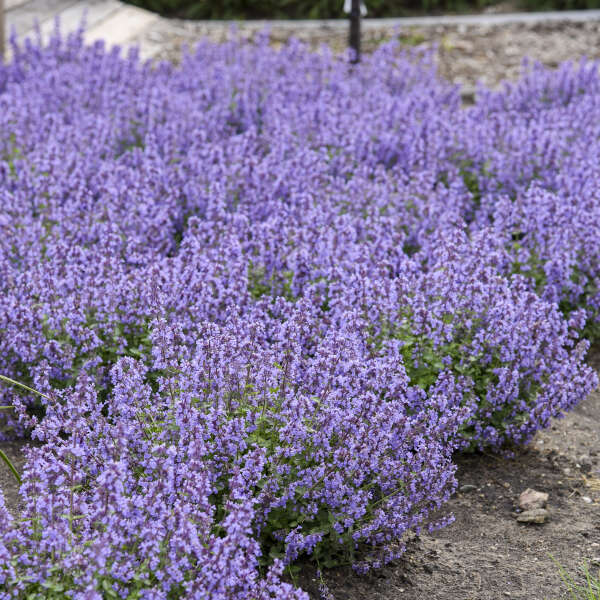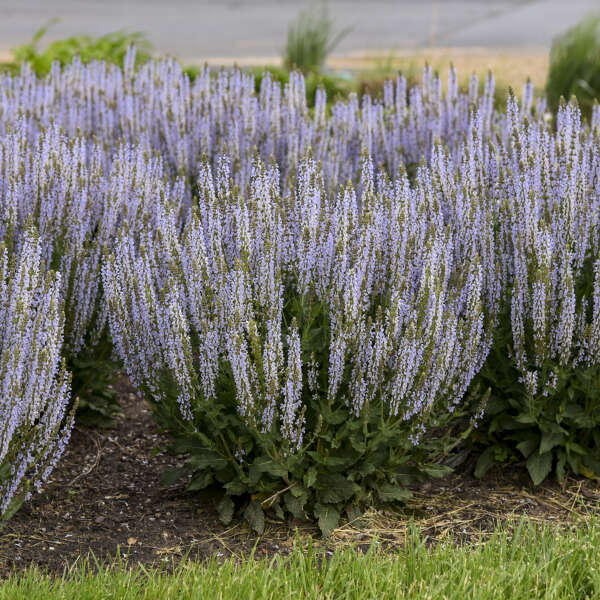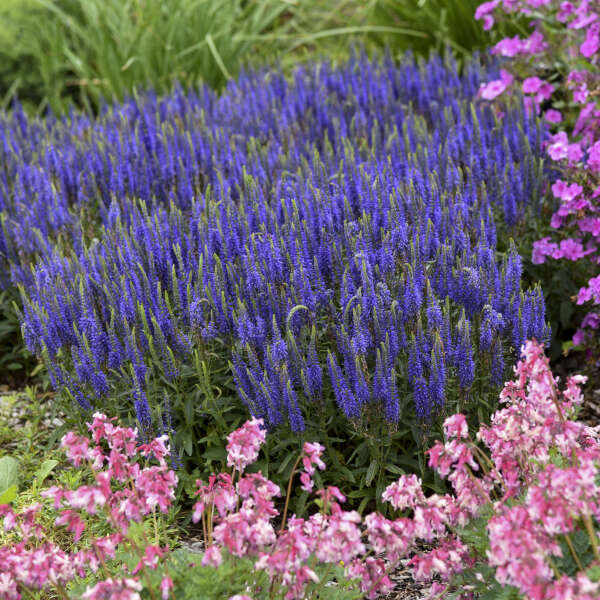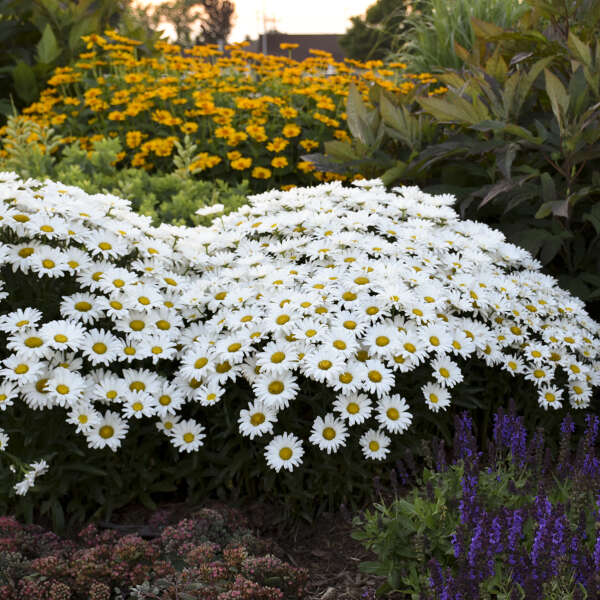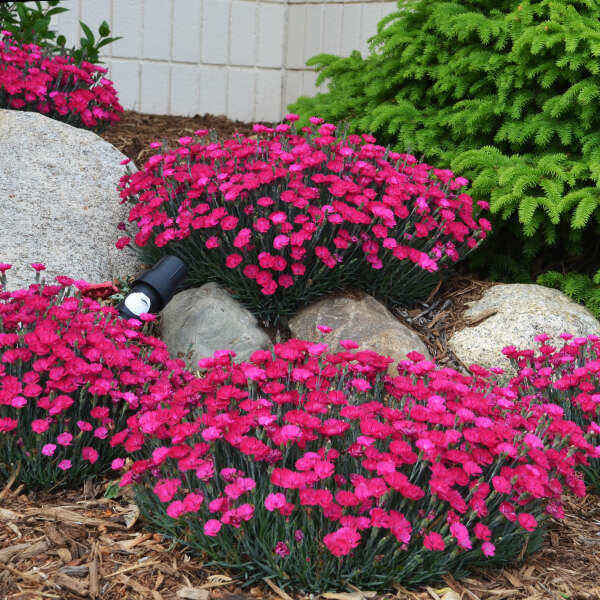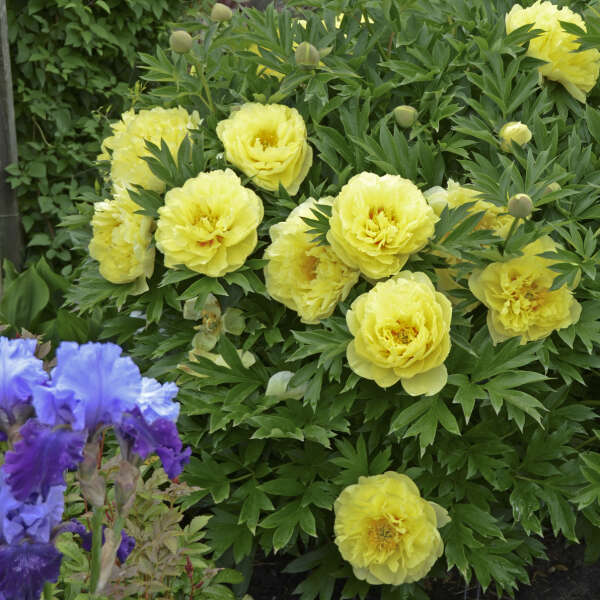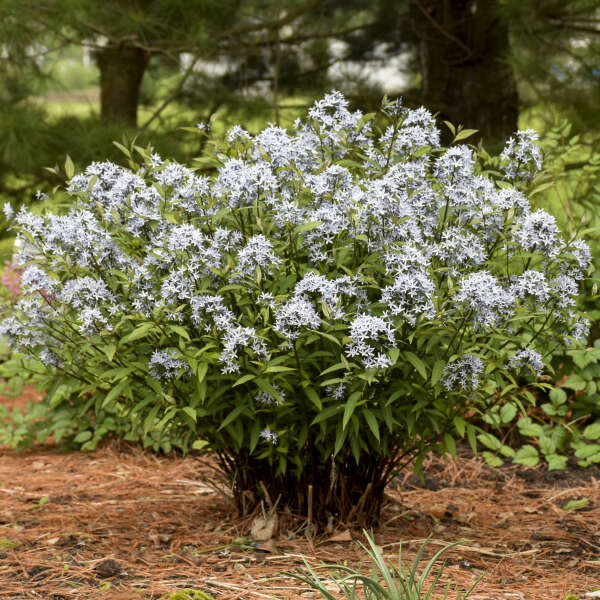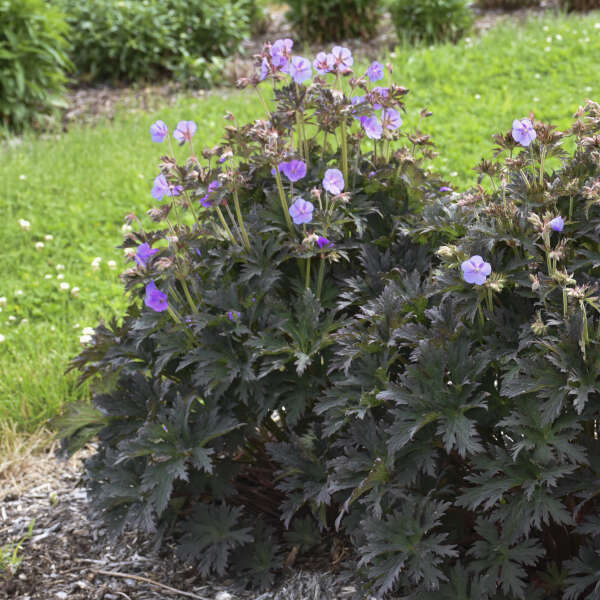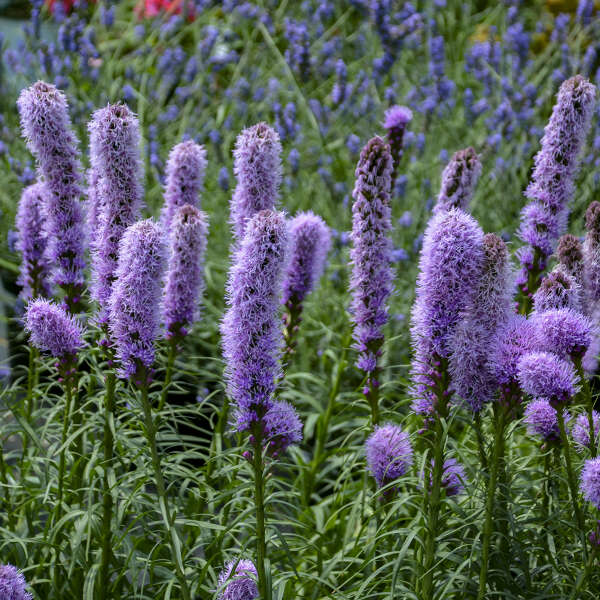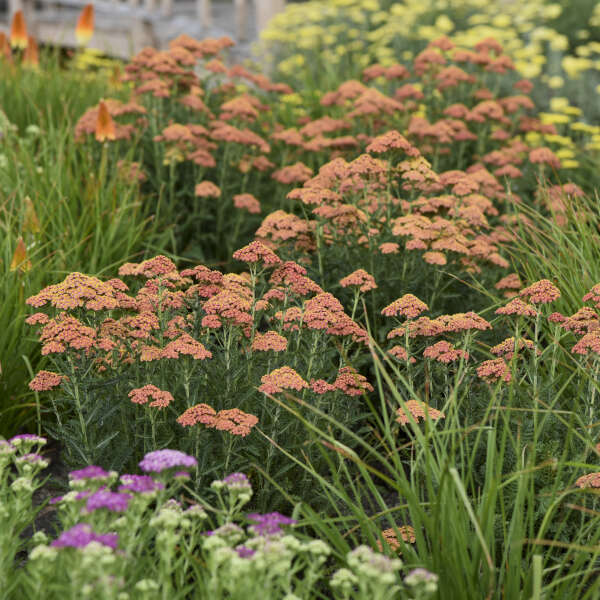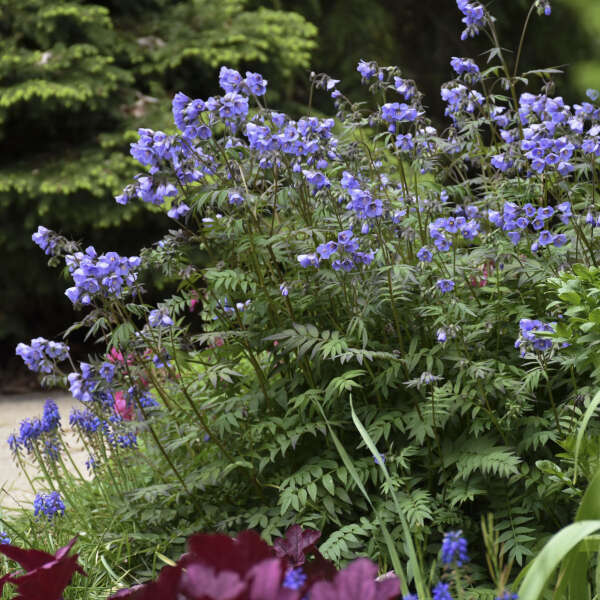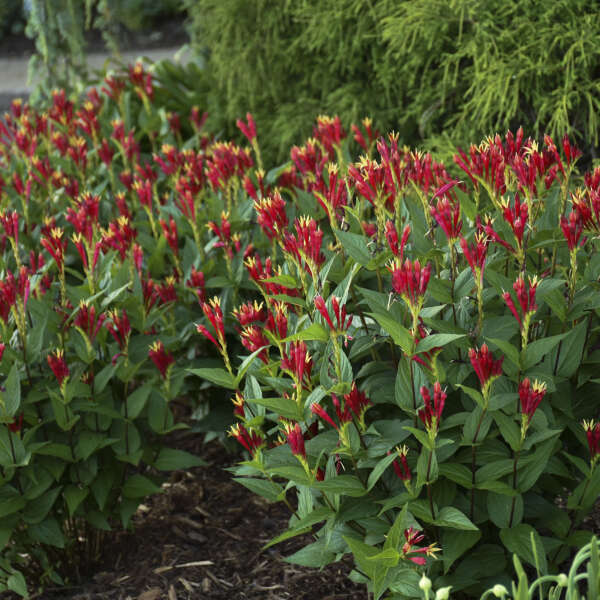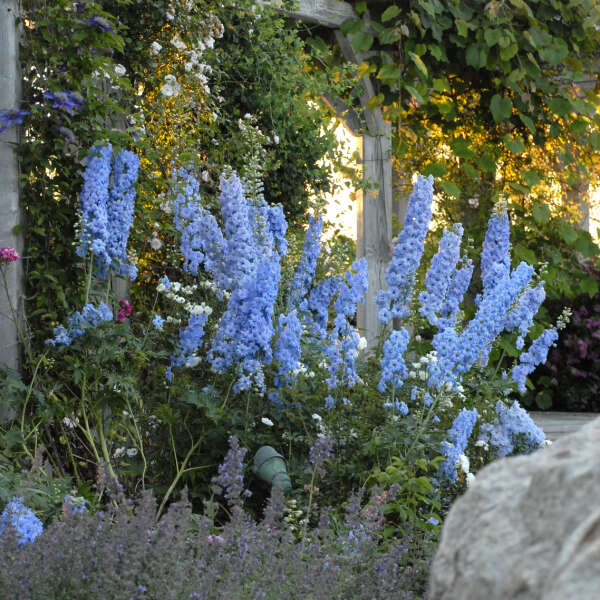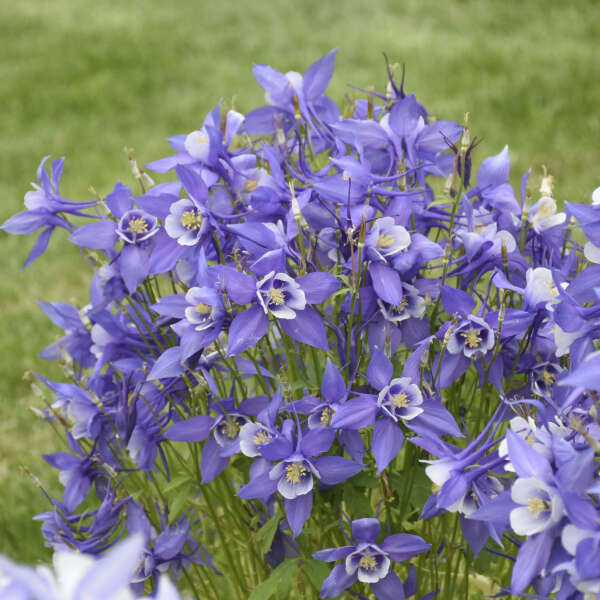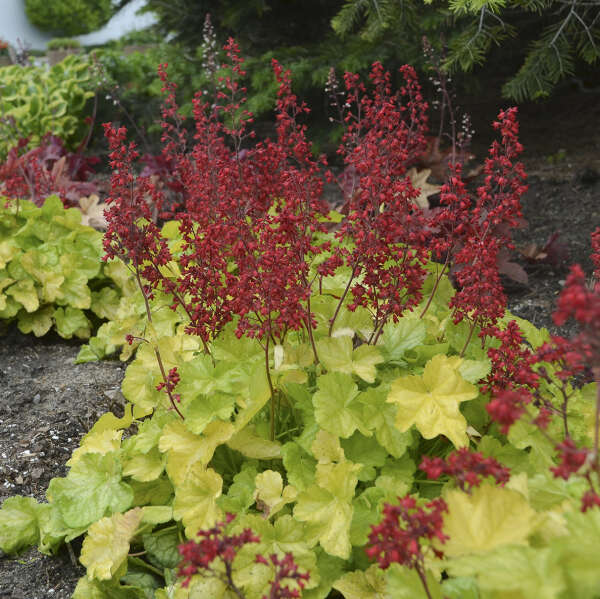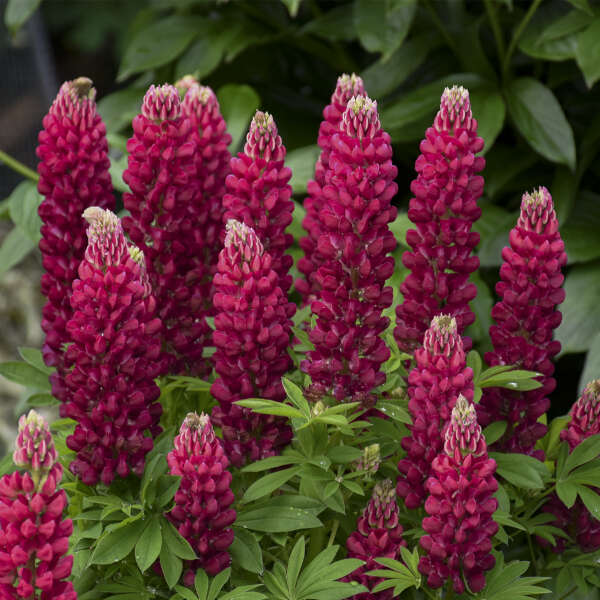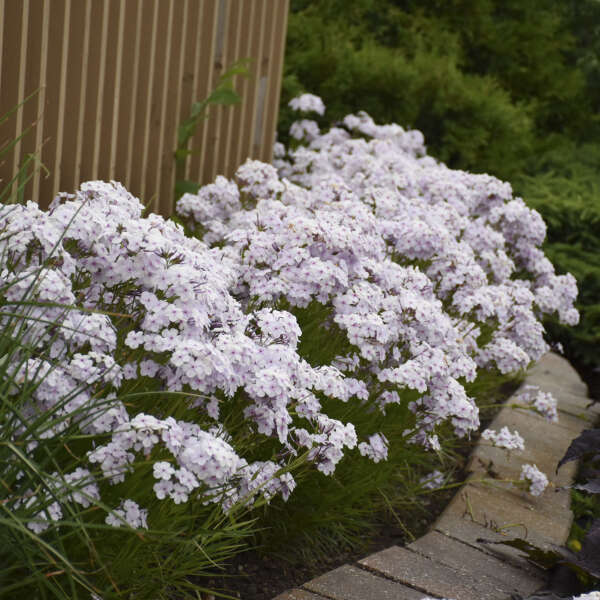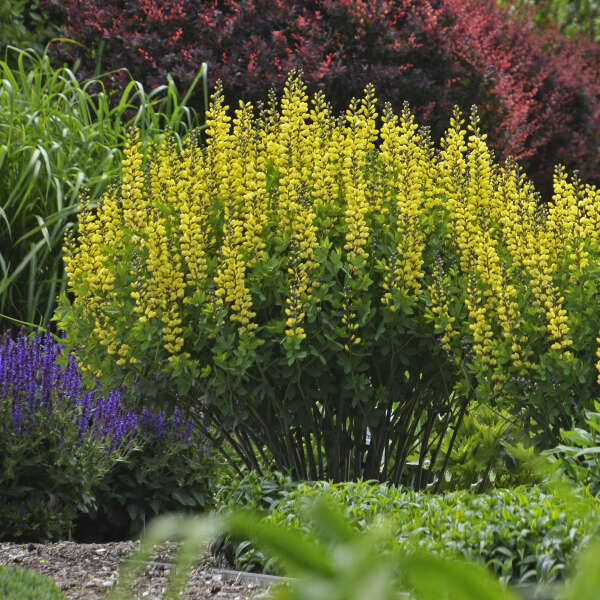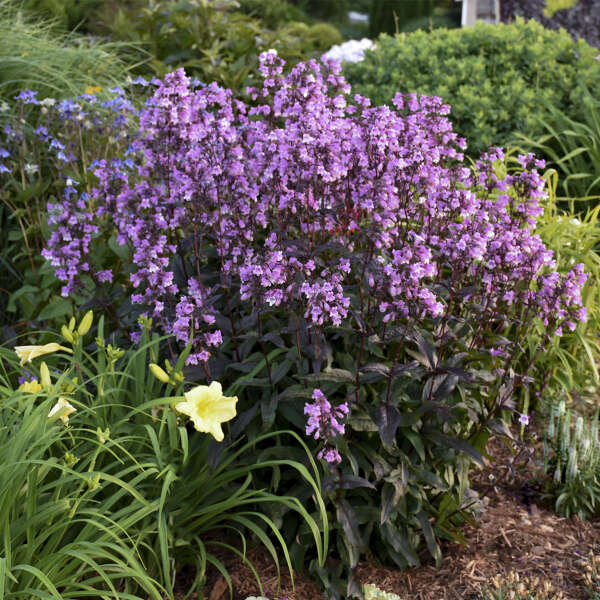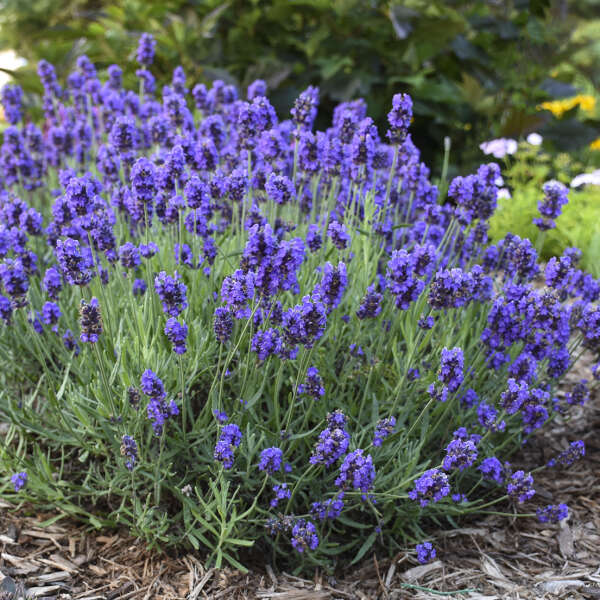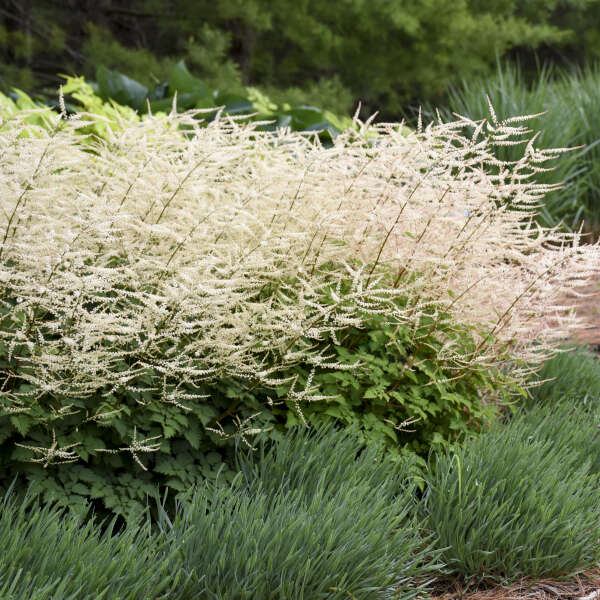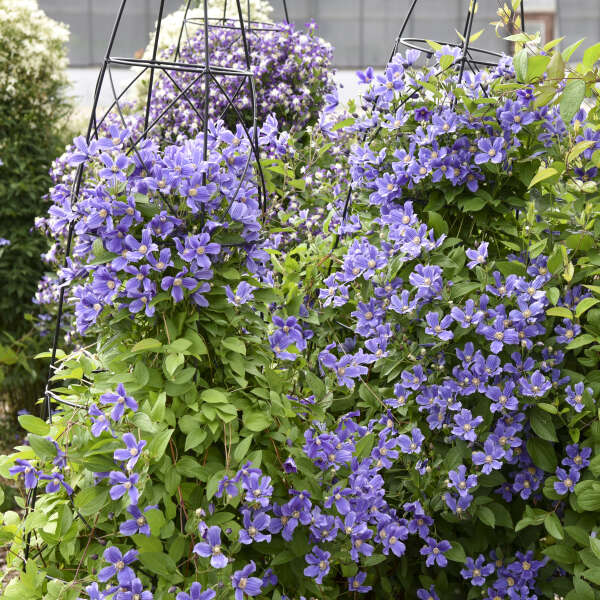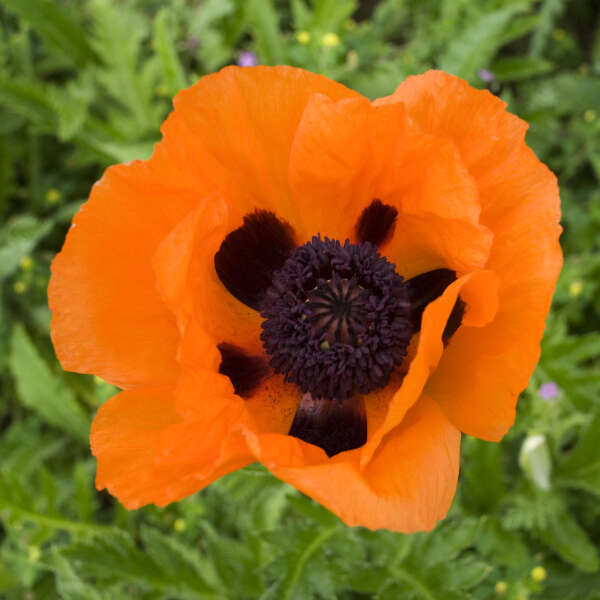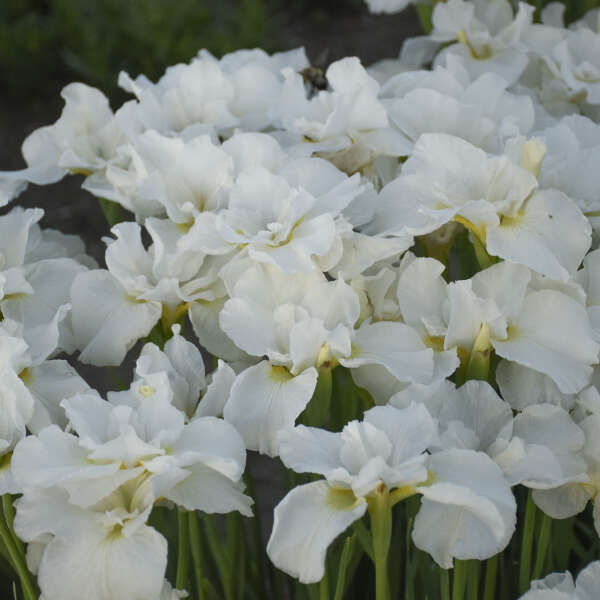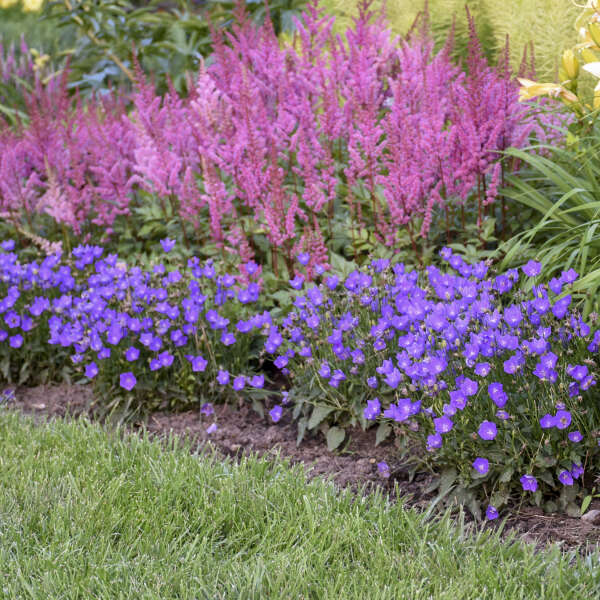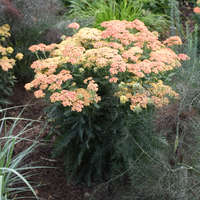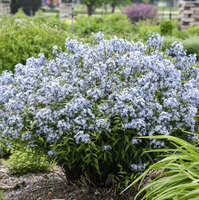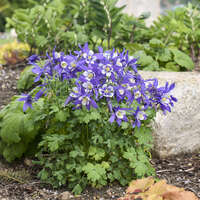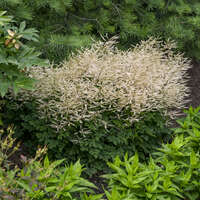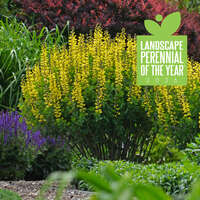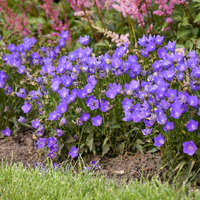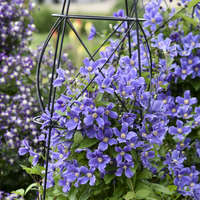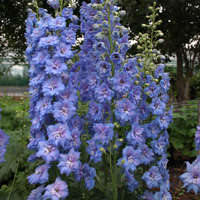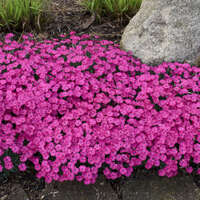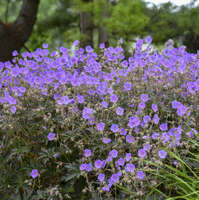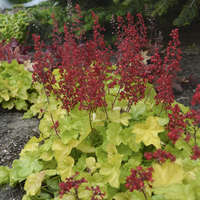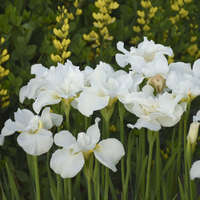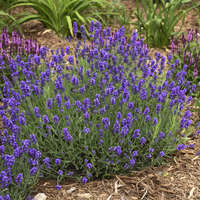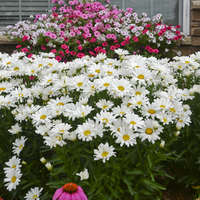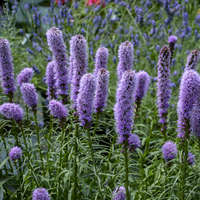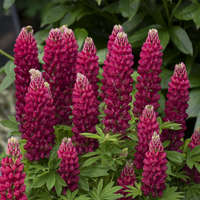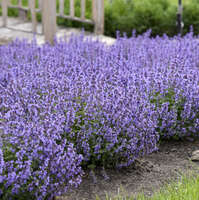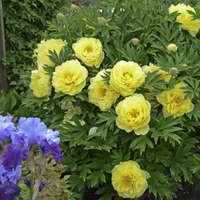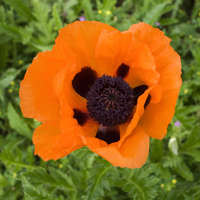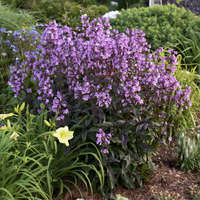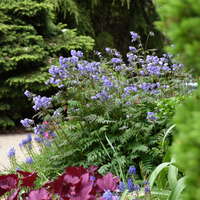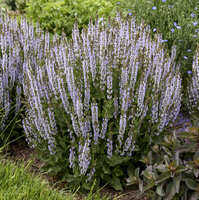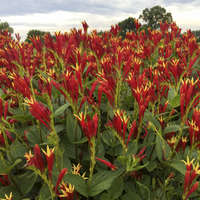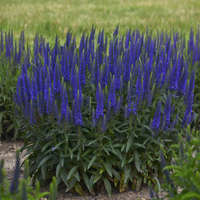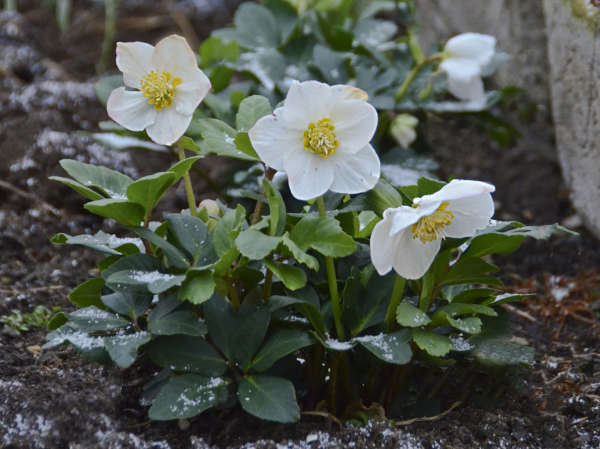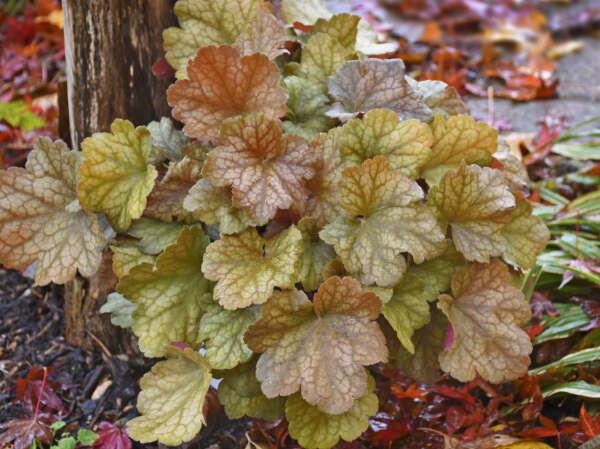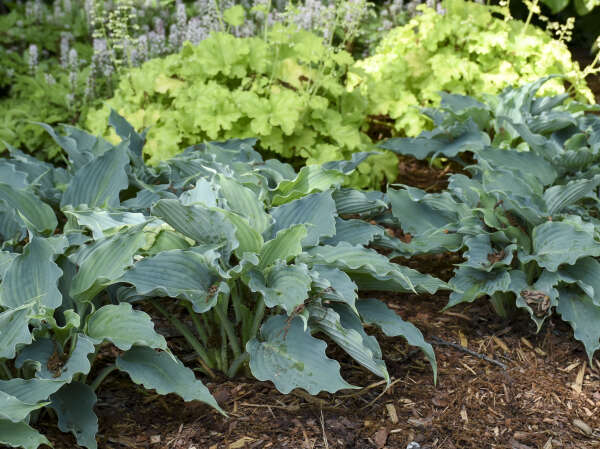June is Perennial Month
25 Perennials that Flower in Early Summer
-
1.
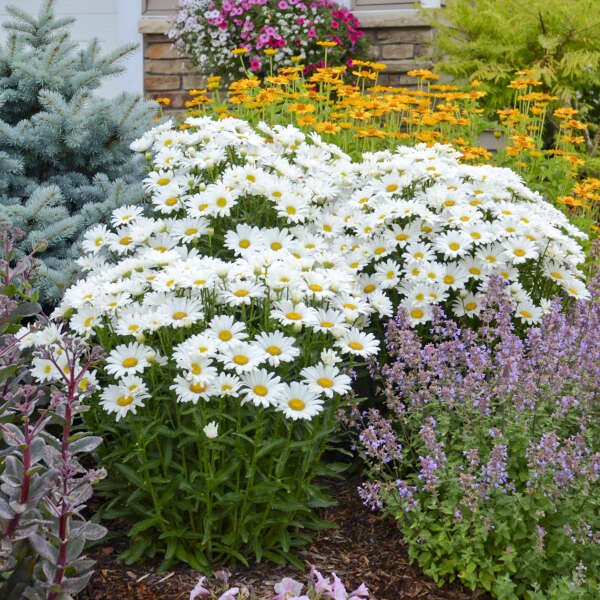
-
2.
Nepeta (Catmint)
When Nepeta's stems are broken, they release an aroma into the air that tends to attract cats, thus its common name, Catmint.
Variety Pictured: Nepeta 'Cat's Pajamas'
Height: 12-14" | Zones: 3-8 | Full Sun
Learn More

-
3.
Salvia (Perennial Salvia, Garden Sage)
Salvia is a staple item for every sunny garden. It asks little more than sunshine and a little drink every once in a while in return for producing a bountiful mass of colorful flower spires from late spring into early summer. It forms a uniform, rounded clump of aromatic, rugose green foliage that looks nice all season long and is not enjoyed by rabbits or deer.
Variety Pictured: Salvia nemorosa 'Perfect Profusion'
Height: 14-16" | Zones: 3-8 | Full Sun
Learn More

-
4.
Veronica (Spike Speedwell)
Veronica is highly valued for its ease of growth and long bloom time. The spiky flowers are an excellent contrast to the more common rounded flower shapes like Shasta Daisies, Coneflower, and Black Eyed Susans. Expect bees to be buzzing about this plant when in bloom.
Variety Pictured: Veronica MAGIC SHOW® 'Wizard of Ahhs'
Height: 14-16" | Zones: 4-8 | Full to Part Sun
Learn More

-
5.
Leucanthemum (Shasta Daisy)
Shasta Daisies are all-time favorites for the perennial border. The cheery flowers begin to appear in early summer and continue on for several months if faithfully deadheaded. Shastas mix so effortlessly with other perennials that no garden should be without them!
Variety Pictured: Leucanthemum superbum Daisy May®
Height: 14-16" | Zones: 5-9 | Full Sun
Learn More

-
6.
Dianthus (Pinks)
In the carnation family, Dianthus cultivars deliver gorgeous single, semi-double, and fully double flowers. Singles tend to deliver more flowers while doubles are significantly larger, sometimes more than twice the size. Singles also tend to grow quicker and can appear like a carpet in the landscape at maturity.
Variety Pictured: Dianthus 'Paint the Town Magenta'
Height: 6-8" | Zones: 4-9 | Full to Part Sun
Learn More

-
7.
Paeonia (Itoh, Garden Peony)
Peonies are classic garden plants that add a bit of nostalgia and charm to the garden. Their fragrant blooms and lush foliage have made them popular for years, and with the recent resurgence in breeding, they will continue to improve. Peonies are simple to grow and can be utilized in many ways, including mass plantings, specimens, or hedges. By choosing a mixture of early, midseason, and late blooming varieties, you can have blooms for up to 6 weeks.
Variety Pictured: Paeonia 'Bartzella'
Height: 30-36" | Zones: 4-9 | Full to Part Sun
Learn More -
8.
Amsonia (Bluestar)
Amsonia thrives in most gardens with little care. It is low-maintenance, easy to grow and trouble-free. Plant it in full sun or partial shade and moist soil of average fertility. If grown in too much shade or very rich soil, its habit will be open and floppy. This plant grows fairly large but it will not need to be divided for many years. Cutting the stems back to within 6-8" of the ground after flowering will result in fuller growth.
Variety Pictured: Amsonia tabernaemontana 'Storm Cloud'
Height: 24-30" | Zones: 4-9 | Full to Part Sun
Learn More

-
9.
Geranium (Hardy Geranium, Cranesbill)
Hardy geraniums are wonderful filler plants for any landscape, either residential or commercial. They blend nicely with most other perennials and offer continuous color throughout the summer months.
Variety Pictured: Geranium pratense 'Boom Chocolatta'
Height: 24-26" | Zones: 4-8 | Full to Part Sun
Learn More
-
10.
Liatris spicata (Blazing Star)
In all, Liatris is a very strong vertical accent and 'Kobold' is one of the best selections available for border gardens. It is a staple item for cutting gardens; it adds a bright, vertical element to bouquets.
Variety Pictured: Liatris spicata 'Kobold Original'
Height: 18-24" | Zones: 3-9 | Full Sun
Learn More -
11.
Achillea (Yarrow)
Yarrow is one of the easiest perennials to grow and is a good choice for beginners. All it needs is full sun and well-drained soil. These plants are an excellent balance of finely textured foliage and bright flower colors. The wide, flat flower clusters are popular landing pads with pollinators.
Variety Pictured: Achillea 'Firefly Peach Sky'
Height: 32-36" | Zones: 3-8 | Full Sun
Learn More

-
12.
Polemonium (Jacob's Ladder)
Polemoniums grow best in cool, moist environments. They will grow in full sun in the northernmost reaches of their zone but prefer afternoon shade in the warmest regions where it grows. Keep plants watered during the warmest months of the season, but be sure the soil is well-drained, especially in winter. Cutting plants back by 1/3 after blooming may encourage sporadic rebloom in late summer.
Variety Pictured: Polemonium 'Heaven Scent'
Height: 18-24" | Zones: 3-7 | Full to Part Sun
Learn More
-
13.
Spigelia (Indian Pinks)
Spigelia is a very versatile perennial-it grows naturally in either sun or shade. This perennial can be found growing in the wild in woodlands and along streambanks throughout the Eastern United States. It's wildly popular among wildflower enthusiasts and highly sought after.
Variety Pictured: Spigelia marilandica 'Little Redhead'
Height: 24-28" | Zones: 5b-9 | Full Sun to Part Shade
Learn More -
14.
Delphinium (Hybrid Bee Delphinium)
Delphinium are a classic garden perennial. These plants are excellent for adding height to small spaces. Their tall flower spikes are easily recognizable when they come into flower in summer. When in flower, the spikes of these plants become heavy and should be staked to avoid toppling over in rough weather, especially taller varieties. Newer hybrids are longer lived than some of the more traditional cultivars.
Variety Pictured: Delphinium 'Blue Lace'
Height: 5-6' | Zones: 3-7 | Full to Part Sun
Learn More -
15.
Aquilegia (Columbine)
Aquilegia is especially lovely when allowed to naturalize in shady, woodland borders. They also have excellent potential as cut flowers, lasting up to 2 weeks in a vase.
Variety Pictured: Aquilegia caerula KIRIGAMI™ Deep Blue & White
Height: 22-24" | Zones: 4-9 | Full to Part Sun
Learn More -
16.
Heuchera (Coral Bells)
Coral bells are easy to grow and blend easily with most other perennials in the landscape. Because of their low, mounding habit, they are often used as edging along paths or in containers. Try cutting a few of the tall flower scapes for fresh bouquets.
Variety Pictured: Heuchera DOLCE® 'Appletini'
Height: 8-10" | Zones: 4-9 | Full Sun to Full Shade
Learn More

-
17.
Lupinus (Lupine)
Lupines really come into their own during warm, sunny days and cool nights and look especially lovely when grown in masses with similar varieties. A memorable sight for any garden lover, these beautiful plants grow into well-established clumps, with several stems rising up out of a single base. A bouquet of Lupines has no equal!
Variety Pictured: Lupinus polyphyllus MINI GALLERY™ - Red
Height: 14-16" | Zones: 4-8 | Full to Part Sun
Learn More -
18.
Phlox (Hybrid Garden Phlox)
These perennials are a favorite of gardeners around the world and a staple of North American native gardens. Be sure to locate these plants in full sun for the best flowering performance and to help avoid powdery mildew concerns. A favorite of pollinators.
Variety Pictured: Phlox 'Opening Act Pink-a-Dot'
Height: 22-26" | Zones: 4-8 | Full Sun
Learn More

-
19.
Baptisia (False Indigo)
Baptisia is easy to grow and will thrive with little maintenance. There are many potential applications in the landscape including meadow plantings, as a backdrop in borders, or as a specimen. Plants are very long-lived once established.
Variety Pictured: Baptisia DECADENCE® 'Lemon Meringue'
Height: 3' | Zones: 4-9 | Full to Part Sun
Learn More

-
20.
Penstemon (Beardtongue)
Penstemons are very drought tolerant perennials that are easy to grow and are rarely bothered by insects or diseases. Plant them in full sun and watch as hummingbirds feast on their delicious nectar.
Variety Pictured: Penstemon 'Midnight Masquerade'
Height: 36-40" | Zones: 3-8 | Full Sun
Learn More

-
21.
Lavandula (Lavender)
Gardeners around the world have been growing lavender for centuries for its intensely fragrant flowers, beautiful appearance, and ease of culture.
Variety Pictured: Lavandula angustifolia Sweet Romance®
Height: 12-18" | Zones: 5-9 | Full Sun
Learn More
-
22.
Aruncus (Goat's Beard)
Though Aruncus tends to be a slow-grower the first couple of seasons, once it is established it puts on a fabulous show year after year. Make sure it has plenty of room to grow when you first plant it; transplanting this species is a very difficult task. This species is native to North America.
Variety Pictured: Aruncus 'Chantilly Lace'
Height: 24-32" | Zones: 3-7 | Full Sun to Full Shade
Learn More

-
23.
Clematis (Bush Clematis)
This non-vining Clematis is completely herbaceous, meaning that it dies back to the ground at the end of the growing season. Flowers appear from late May to June, with some rebloom into the later summer months. After it is finished blooming, attractive cream thread-like seed heads appear.
Variety Pictured: Clematis 'Rain Dance'
Height: 42" | Zones: 3-7 | Full to Part Sun
Learn More
-
24.
Papaver
In the center of a poppy's flower rests a very large, velvety-black seed capsule surrounded by prominent, dark purple stamens. Altogether, these flowers absolutely steal the show when they are in bloom. After the bloom cycle is completed however, these perennials will go dormant, so plan on planting other plants nearby to fill in the gaps.
Variety Pictured: Papaver orientalis 'Prince of Orange'
Height: 30" | Zones: 3-7 | Full Sun
Learn More -
25.
Iris sibirica (Siberian Iris)
Siberian irises are haled for their elegant, delicate flowers and disease resistance. They perform admirably in the sunny to partially shady garden, but need plenty of water throughout the season to continue looking their best. In naturalized settings, they are particularly effective around water features. They can also be grown under Black Walnut trees since they are not effected by juglone. Siberian Irises bloom before Japanese Irises but after Tall Bearded Irises.
Variety pictured: Iris sibirica 'Swans in Flight'
Height: 33" | Zones: 3-9 | Full to Part Sun
Learn More -
26.
Campanula carpatica (Carpathian Bellflower)
This group of Campanula is a robust, rock garden species, and many will thrive on sunny walls or banks. They require moist, very well-drained soil and will grow in either sun or partial shade. Most members of this group appreciate some afternoon shade in southern regions.
Variety Pictured: Campanula carpatica 'Violet Teacups'
Height: 10-12" | Zones: 3-8 | Full to Part Sun
Learn More
